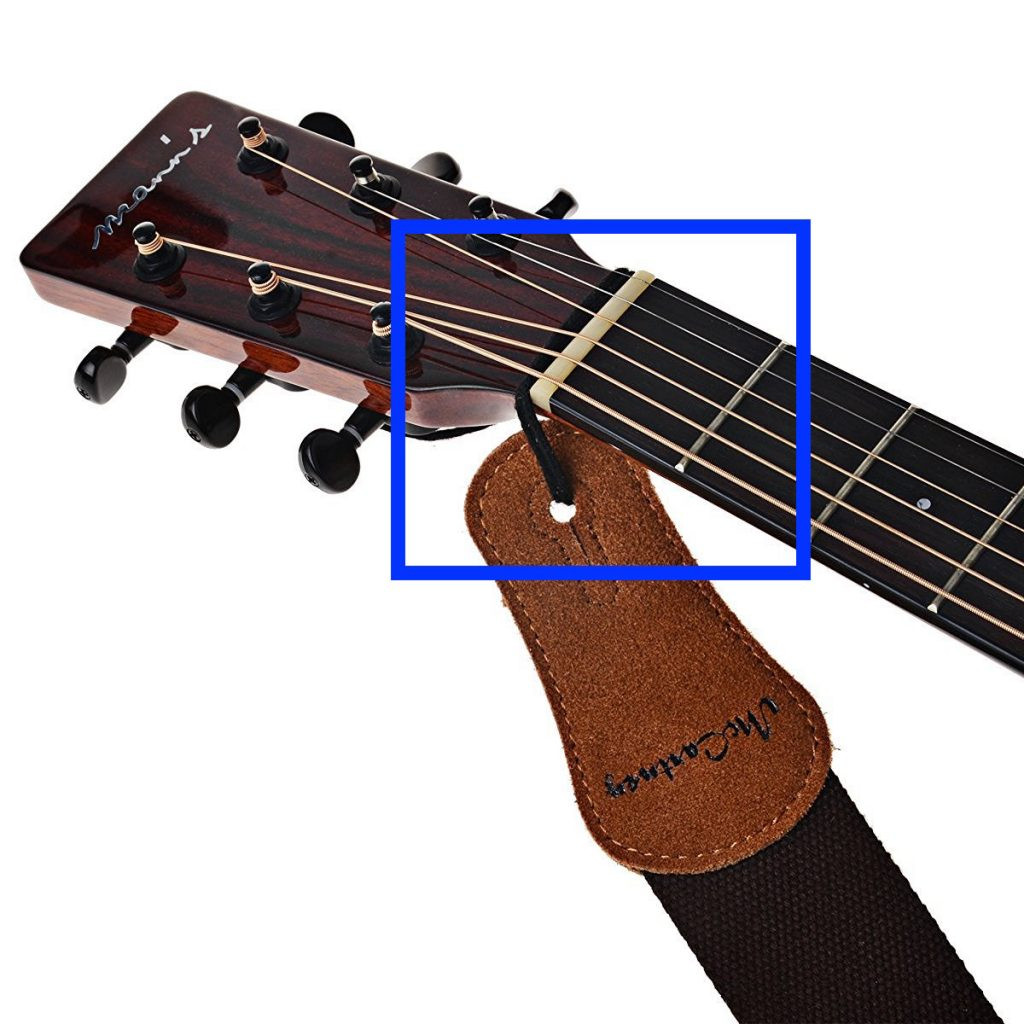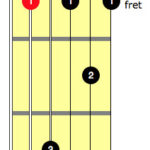So, you’re ready to stand up and play your acoustic guitar like your favorite musicians? Fantastic! One essential accessory for playing while standing is a guitar strap. If you’re new to guitar, or just haven’t used a strap before, the process of attaching it might seem a little mysterious. Don’t worry, it’s actually quite simple. This guide will walk you through the easy steps of how to put a strap on your acoustic guitar, ensuring you can play comfortably and confidently, standing or sitting.
Understanding Guitar Straps and Their Importance
A guitar strap is more than just a piece of fabric or leather; it’s a crucial tool for any guitarist who wants to play standing up. It supports the weight of your guitar, freeing up your hands to focus solely on playing. Beyond just standing, straps offer several benefits:
- Comfort and Ergonomics: A good strap distributes the weight of your guitar evenly across your shoulder, preventing strain and allowing for longer, more comfortable playing sessions, whether you’re standing or even sitting.
- Playing Freedom: Straps allow you to move around more freely while playing, which is especially important for performing and engaging with an audience.
- Guitar Security: A securely attached strap prevents accidental drops, protecting your instrument from damage.
Guitar straps come in various materials like nylon, leather, and suede, and in different widths and designs to suit personal preferences. Some even come with features like strap locks for extra security. No matter the style, the fundamental way to attach them to your acoustic guitar remains the same.
Methods to Attach a Guitar Strap to Your Acoustic Guitar
There are primarily two common methods to attach a strap to your acoustic guitar, depending on whether your guitar has one or two strap buttons.
Method 1: Using Two Strap Buttons
This is the most common and generally most secure method for attaching a guitar strap, especially on modern acoustic guitars. Most guitars designed for strap use will have two strap buttons already installed.
-
Locate the Strap Buttons: You’ll typically find one strap button at the base of the guitar body. The second button is usually located either at the heel of the neck (where the neck joins the body) or on the upper bout (the upper curve of the guitar body).
 how-to-attach-a-guitar-strap
how-to-attach-a-guitar-strap -
Attach the Strap Ends: Guitar straps have buttonholes at each end, usually made of leather or reinforced material. Take one end of your strap and locate the buttonhole. With the button facing upwards, push the buttonhole over the strap button at the base of your guitar. You might need to apply a bit of pressure to get it securely on, especially with new straps, as the buttonholes can be tight initially. Repeat this process for the other end of the strap and the second strap button, ensuring the strap isn’t twisted.
-
Ensure Security: Once both ends are attached, give the strap a gentle tug to ensure it’s securely fastened to both buttons. A snug fit is essential to prevent the strap from slipping off during playing. For extra security, especially with valuable guitars, you might consider using strap locks, which replace the standard strap buttons and provide a more robust locking mechanism.
Method 2: Using One Strap Button and a Tie (for guitars without a neck button)
Some acoustic guitars, particularly older models or those designed without standing in mind, might only have a single strap button at the base of the guitar. In this case, you’ll need to use a tie method for the other end of the strap.
-
Locate the Single Strap Button: Identify the strap button at the base of your acoustic guitar. Attach one end of your strap to this button as described in Method 1.
-
Prepare a Tie: You’ll need a piece of sturdy string, a shoelace, a leather strip, or even paracord. Avoid thin or weak strings that might break.
 string-to-attach-guitar-strap
string-to-attach-guitar-strap -
Tie the Strap to the Headstock: Take the other end of your guitar strap. Thread your chosen tie material through the buttonhole of the strap end. Now, carefully thread the other end of the tie material underneath the guitar strings, just above the nut and below the headstock. Be sure to go under the strings, not over, to avoid affecting your guitar’s tuning or sound.
-
Secure the Tie: Bring the ends of the tie material together behind the headstock and tie them securely. A simple knot like a square knot or a bowline knot will work well. Ensure the knot is tight and the strap is held firmly against the guitar neck. Double-check that the tie is secure and won’t slip or come undone while you’re playing.
Optional: Using a Headstock Strap Adapter
For those who prefer a more convenient and potentially more secure method than tying directly to the headstock, headstock strap adapters are available. These are straps with a loop designed to go around the guitar’s headstock, providing a secure point to attach your guitar strap. They are easy to install and remove and can be a good alternative to tying, especially if you frequently attach and detach your strap. You can find these adapters at most music stores or online.
Tips for Comfortable and Secure Guitar Strap Use
Once your strap is attached, there are a few more things to consider to ensure comfortable and secure playing.
-
Practice Standing Up: If you intend to perform or play standing, practice with your strap while standing. As mentioned in the original article, playing standing up uses different muscles and requires a slightly different technique than playing seated. Getting used to playing standing will improve your performance and comfort when it matters.
-
Test Your Strap Security: Before each playing session, especially if you’re moving around, give your strap a quick check. Make sure both ends are securely attached to the buttons or that your tie is firmly in place. This simple step can prevent accidental drops and damage to your guitar. Consider using strap locks for extra peace of mind, particularly during performances or energetic playing.
-
Adjust Strap Length: The ideal guitar strap length is a matter of personal preference. Experiment to find what works best for you. A common starting point is to adjust the strap so your guitar hangs at roughly the height of your belt buckle or belly button. Some players prefer their guitar higher, while others like it lower. Also, you might find you prefer a slightly different length for acoustic versus electric guitars. Play around with different lengths until you find a position that feels comfortable and allows you to play freely.
-
Consider Different Strap Types: Experiment with different strap materials and widths. Wider straps can distribute weight more effectively and be more comfortable for heavier guitars. Padded straps can also add extra comfort for long playing sessions. Leather, nylon, and suede straps each offer different feels and aesthetics, so choose one that you like both functionally and visually.
Conclusion
Putting a strap on your acoustic guitar is a straightforward process that opens up a new dimension of playing, allowing you to stand, move, and perform with greater freedom. Whether your guitar has two strap buttons or just one, there’s a method to securely attach your strap and enjoy playing in comfort. With a little practice and experimentation, you’ll find the perfect strap setup and length for your playing style. Now you’re all set to strap on your guitar and rock!
What kind of guitar strap do you prefer? Share your experiences and tips in the comments below!

